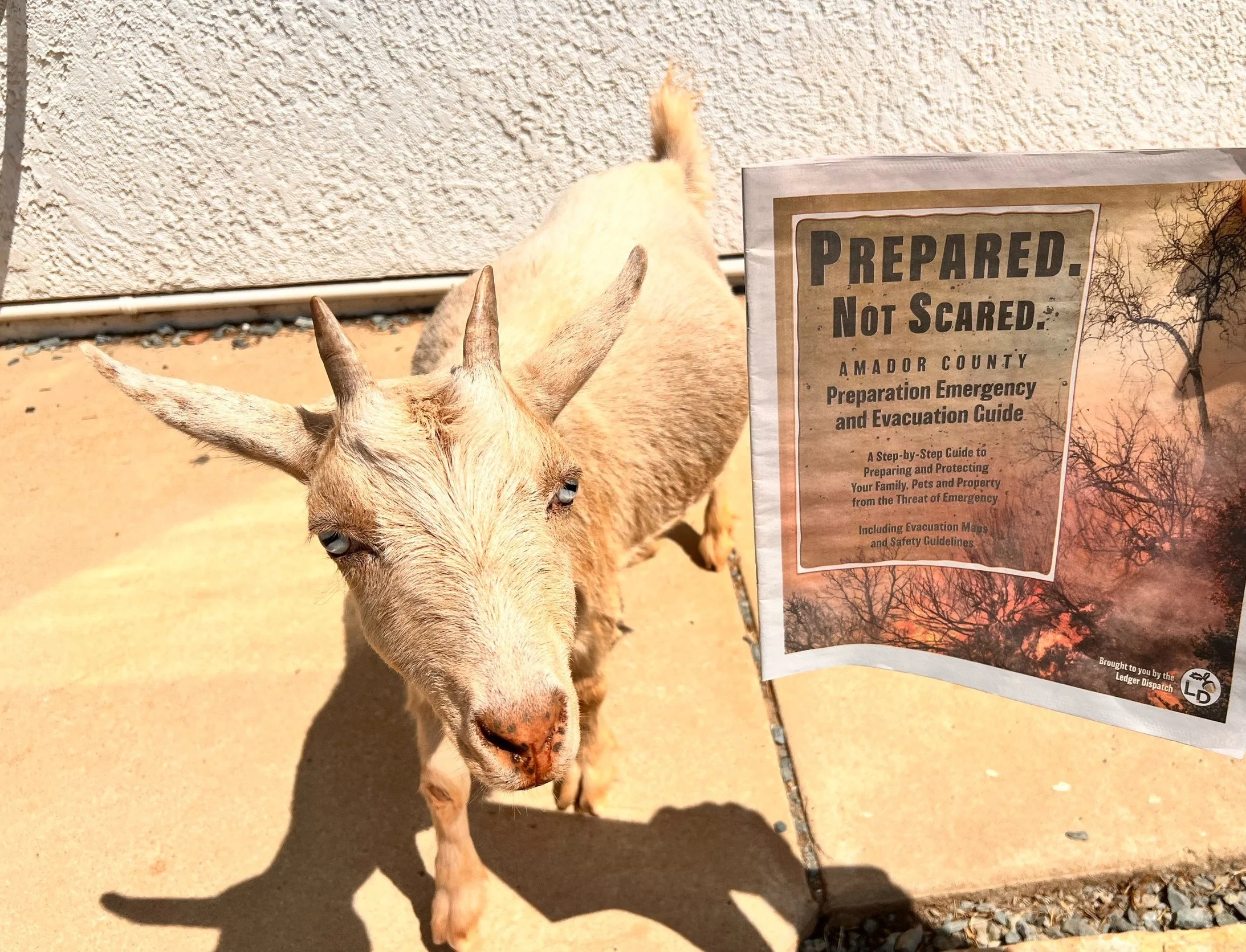Wildfire Preparedness Tips
Miley the goat reminding us to be “Prepared. Not Scared.”
Wildfires are a constant threat in California that continue to damage communities and displace residents across the state, year after year. Just during the first days of January 2025, in the midst of the fatal and ravaging Los Angeles County fires, Governor Gavin Newsom stated that “fire season is now year-round in the state of California.” This indicates that we have to be prepared NOW!
At Dottie’s Goat Farm we treat wildfire risk and damage seriously. We are committed to be a part of the preparedness and prevention efforts not only through our goatscaping services but also through education and dissemination of information.
A wildfire could happen anytime and anywhere in the Golden State—even in the middle of winter. So, we have put together a list of preparedness tips, with specific details and resource links, to help you protect yourself, loved ones, and property against wildfires and significantly minimize fire-related risk, damage, and loss.
Tips to help you prepare for wildfires:
-
Create an emergency contact sheet with names and phone numbers
Prepare an evacuation plan with routes and maps
List safety procedures
Establish roles for each household member
Practice evacuation plan twice a year
-
3-day supply of non-perishable food and water per person
Food and water for pets
First aid kit, sanitation supplies, face masks
Pack medication
Change of clothes, blankets extra pair of eyeglasses or contact lenses
Flashlight, solar or hand crank radio
Batteries, cellphone and laptop chargers,
Extra car keys, credit cards, cash, traveler’s checks
Copy of birth certificate, passport, medical and house insurance, pet records
-
Follow state and local fire agencies via web and social media sites for the latest updates
Sign up for free emergency alerts by contacting your county or local officials
Pay attention to information from legitimate and trusted news sources
Check on family members and neighbors
-
Create an evacuation action plan for pets/livestock
Have trailer hauler and spare tires ready
Open gates so animals left behind can escape or seek shelter
You may install a “Knox Box” to grant firefighters fast access to your property
Contact animal control or Sheriff if animals are left behind
Copy of vaccination and medical records, updated pet photos
Prepare contact information sheet with veterinarian, local fairgrounds, stockyards and neighbor’s phone numbers
Feed supply like hay, alfalfa, water buckets, shovel
Water, food, toys, treats, leashes, bowls, water buckets, shovel
-
Opt for metal, clay, or tile roofing instead of wood or shingle
Prevent gaps under the roof tiles or shingles to block wind-blown embers
Clear leaves and debris from the roof
Cover vents with noncombustible, corrosion resistant metal mesh
Create defensible space by using gravel, pavers or concrete around the home
Maintain at least 100 ft of wild grass or shrub clearance around your home
Choose fire resistant plants
Clear dead plants and brush, and prune flammable shrubs, trees and branches
Choose fire resistant plants
Have hoses and water access, including from pools and wells
Install metal or fire resistant fencing instead of wood
-
Don’t use lawn mowers or tractors on hot, dry, or windy days
Make sure mowing equipment is working properly
Mow before 10 a.m. or when advised by local authorities
Consider goatscaping services as a safe, economical, and reliable alternative for land clearing
Check with your local air and fire districts before you burn
Burn far away from structures and flammable objects
Take into consideration that each household has different needs and circumstances, therefore make sure to craft your wildfire preparedness plan according to your situation. Keep in mind that if you live near natural areas in California the risks of being impacted by wildfires is greater. So, establishing, practicing, and implementing the wildfire safety procedures will be vital for you and your family during an emergency.

